A column by Jaryd Clifford – Runner’s Tribe
“Fall down seven times, stand up eight” – Japanese Proverb
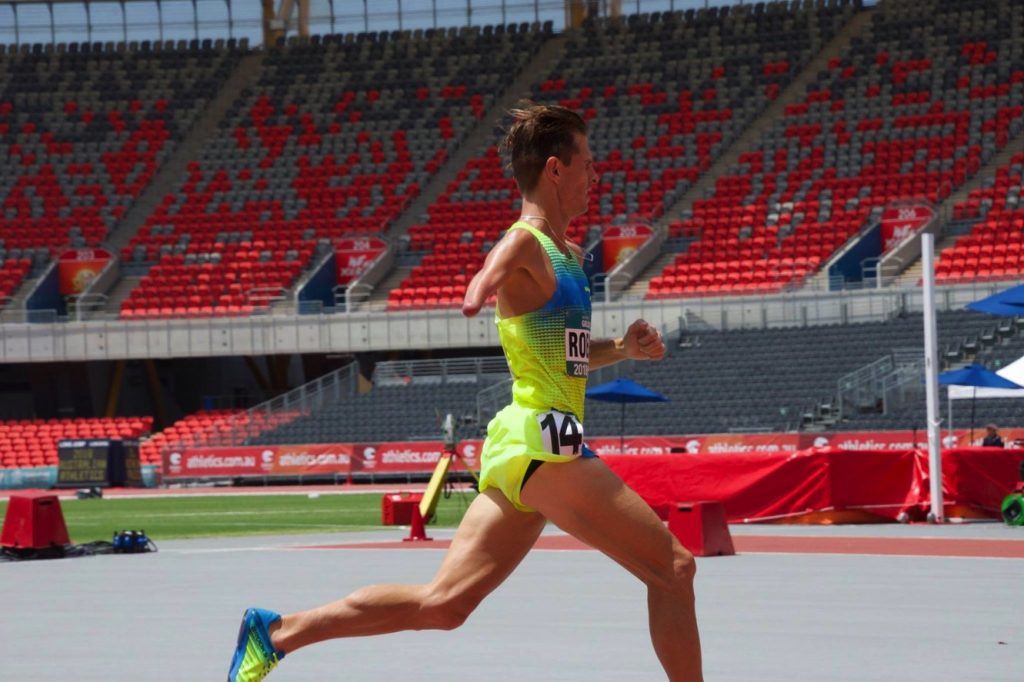
Carrara stadium was a furnace and the mondo was on fire. Flames licked at the heels of any runner that stepped foot on the track last weekend. It either ignited incredible performance, or, contrastingly claimed you under its spell. I ran in the 5000m. A boy in a man’s race. At the front, the pace was historic. Pat Tiernan – a world finalist – bid bravely for victory, attempting to win from gun to tape, a feat hindered only by the oppressive conditions. This left three to dip under 13:20, led home by Morgan McDonald’s blistering finale. The race was another important stepping-stone in the rise of Australian distance running. It was a resounding promise to the future. Nevertheless, one performance threatened to fly inconspicuously and unjustly, under the radar.

It was a world record, run by three-time Paralympian Michael Roeger. His time of 14:06.56 sliced 8-seconds from his previous record and moved him closer to taking the title of fastest Paralympian over the distance. However, this story does not imbue itself in statistics. This run was stirring because of the path he has trodden throughout his career, and immediately, in the last twelve months. As a teammate and training partner, I witnessed firsthand the agony of the Rio games, the heartbreak before the London World Championships and the way he has picked himself up since. From my experiences, I have come to understand one thing – holistically, his will is unbreakable. His story is one that needs telling and needs reading. He is one of our toughest and without a doubt one of our best. This is his story.
Michael Roeger – hereby referred to as Roegs – grew up in Langhorne Creek, nestled amongst the picturesque Adelaide Hills. His childhood was relatively normal. From early on, he found himself immersed in sport like most kids his age and alongside his twin brother, Chris, developed a competitive instinct that has remained entrenched in him ever since. However materialistically, he was unlike everyone else. He was born without the lower half of his right arm. Determinedly, he embraced this element of himself and refused to let any absence of limb pollute the potential in his life. There was no bigger testament to this then when he strode out onto the football field and begun picking a part an unsuspecting opposition with effortless proficiency. “Growing up I always loved footy and we were always kicking a Sherrin around. I could kick on both feet and take a mean overhead mark, even with the stump,” he said. “I remember one time my opponent gave me no respect and I kicked ten on him. Umpires were not too bad. Only when they pulled me up for a throw when I had passed with my stump… I would just give them a look.” He was a premiership player before he was a runner.
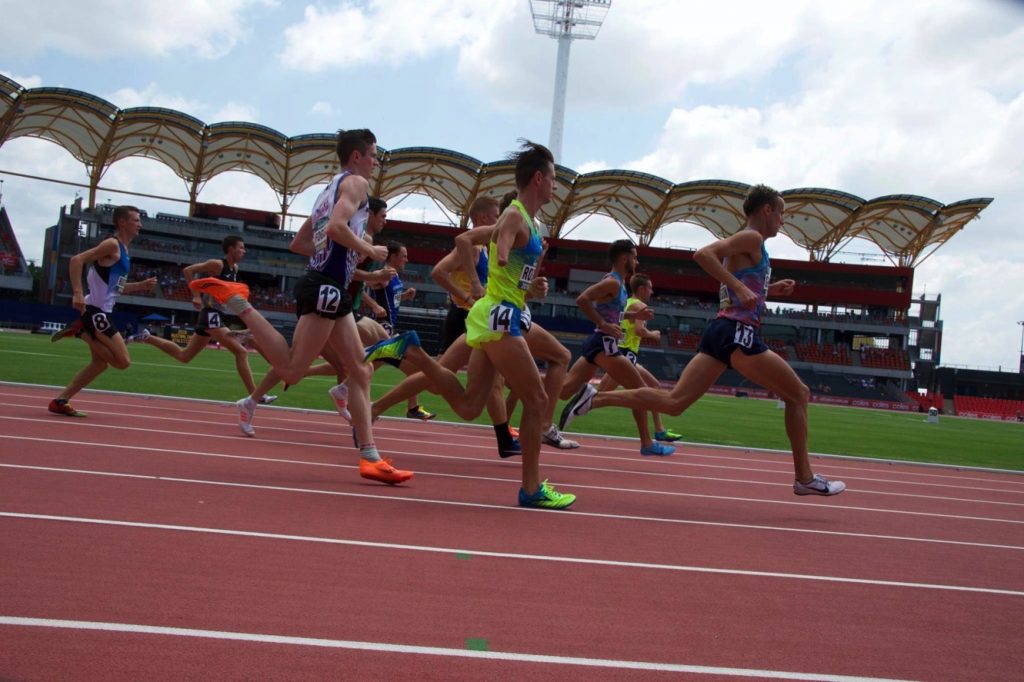
When he did become a runner, his natural talent shone through. It had been clear from early on that he had a natural gift for endurance and his apt for hard work, thrust him down the path of running. “I realised I was a good runner in primary school,” he said. “Running our cross country around the local vineyards in Langhorne Creek, no one could keep up. I knew I had an engine even then.” Through high school, this endurance engine continued to blossom, soon establishing him as a rising star in the state. After three years of devoted toil and training, he earnt the right to tackle the world in the green and gold.

At 19 years of age, Beijing and the iconic Bird’s Nest stadium played host to his international debut. Under the lights, dimmed in the smoggy air, Roegs took to battle with one of the toughest categories in the Paralympic Games. He breezed through his 1500m heat, before placing 8th in the final. A few days later, he ran 11th in the 5000m. A strong showing in his first outing for Australia. Abraham Tarbei of Kenya won both races in world record times; little did he know that the young Australian tailing the field would be the one to take them from him. Tarbei had unknowingly lit a fire in Roegs’ belly. “I told myself from then on that I wanted to be the best in the world in my class,” he said. “I wanted to be as good as the Kenyans and Algerians. I promised myself I would work as hard as I could to get there.” The stage was set.
However, he had to bide his time. After Beijing, he moved to Canberra to train on scholarship at the Australian Institute of Sport under renowned para-sprint coach Iryna Dvoskina; but due to the old sporadic infrequency of the IPC World Championships, the next global event was not until 2011. This left him ample time in the intervening years to mature over distance and fine-tune any little kinks in the armoury. When the world championships finally did roll around he was more than ready. Under Iryna’s watchful eyes, he had transformed into a “long sprinter” and his hopes lied in the 800m. After an unsurprising 7th in the 1500, he fronted up to the two-lap final with ambitions of medalling. Excruciatingly, he narrowly fell short, crossing the line in 4th. However, his category had witnessed a changing of the guard. Samir Nouioua of Algeria, a former double Paralympic Champion in 2004, was back on top, with wins over both distances. He would become Roegs’ future nemesis on the track.
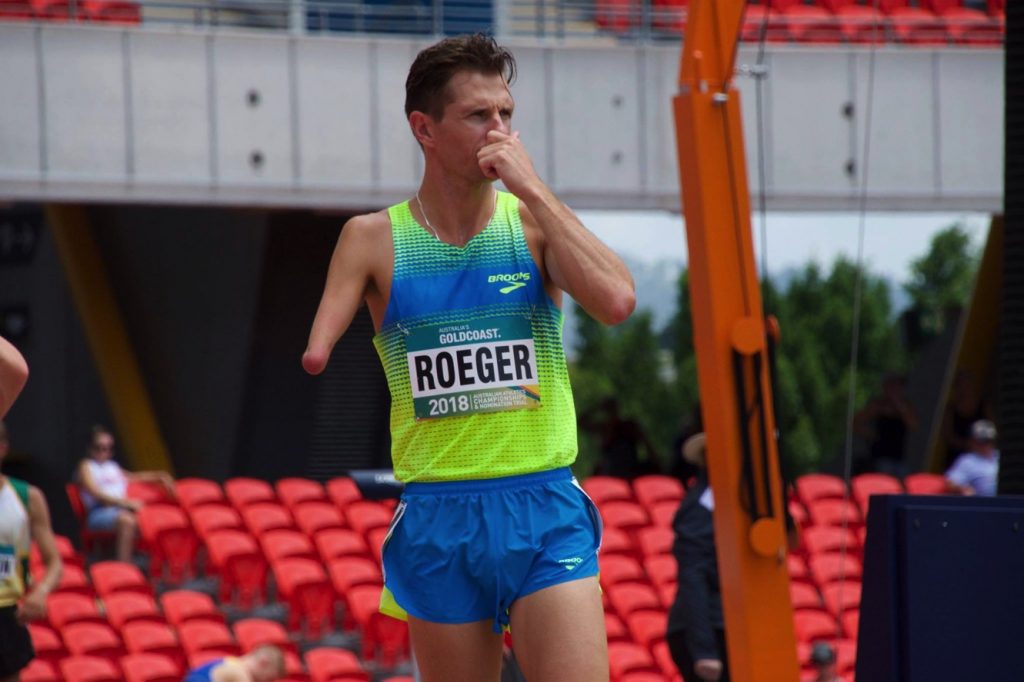
The next year of his life is hard to fathom. It would prove to be one that nearly killed him and left him teetering on the edge of giving it up. The 2012 London Paralympic Games carried the expectation that they were going to be ‘the best ever’; they were going to be where Roegs would make his mark on the big stage and launch himself into the stratosphere of medal winners. He had trained harder than ever, and with a ferocity and drive that exists deep down, only in the face of such monumental events. He had prepared for everything, but nothing could prepare him for what transpired. With devastating timing, calamity struck within twenty-four hours of his 800m heat. He had gone to bed the night before his race, his only thoughts of making the final. He woke up twice that night and feinted both times. Clearly, something was going wrong. With an inborn stubbornness, he refused to see the reality of his situation. He dismissed it as nerves, determined not to let anything derail his chances. With a pounding headache, he warmed up, and then spewed blood behind the call room tent. He had gastrointestinal bleeding. Over the course of that day, he would lose four litres of blood. Still, he was adamant on racing for his friends and family back home, eyes glued to their television screens. Within 200m, any glimmer of hope was shattered. Within 400m, he was scraping himself off the track and down the tunnel. Moments later, he was on his way to hospital and a blood transfusion. In the blink of an eye, his dream had crumbled cruelly out of his control. “You give up so many things, you train so hard for this one chance every four years, and to not be able to finish my race was devastating,” he said in an interview with Run 4 Your Life Magazine in 2016. He descended into a shroud of darkness. To him, his future in the sport was bleak and his doubts of whether he would step onto a track ever again appeared insurmountable. Nevertheless, as I said earlier – his will is unbreakable.
After the scare in London, Roegs undertook the task of remodelling himself into a ‘true’ distance runner. He knew that to take the next step, things needed to change and after living amongst demons, the time had arrived. AIS Senior Physiologist and elite runner Philo Saunders was the man called upon in crisis and they set about moulding a four-year plan, founded on the dream of Paralympic gold. He was back on track. “I believe Philo is one of the best distance coaches in the world,” Roegs said. “He picked me up and instilled this belief in me that I could be the best.” This belief carried him to the 2013 IPC World Championships in Lyon, France, as a new and improved runner. He was still awaiting that elusive global medal. When it finally came, it came in two. Two bronze medals – 1500m and 5000m – confirmed what he had always thought. He could be the best. He just needed time.
The next year he ran 3:51.08 over 1500m in Melbourne. This run climbing him toward the top of the world rankings and within a second of the world record. It also meant he had qualified for the able-bodied national championships, a first for a para-athlete on the track in Australia. These feats combined, saw him take out Australian Athletics’ Male Para-Athlete of the Year for 2014. It was a year for pioneering; the next was set aside for innovation. Another impressive domestic season preceded a lung-busting altitude camp in the mountainous Flagstaff. The result, 3:48.55 in Boston, and his first world record. Unfortunately, the absence of drug tests rendered the record ineligible for ratification. Regardless, he had cemented himself as the fastest arm amputee in the world over 1500m. All he needed was to prove this at the upcoming world championships, held in the sauna box of Doha, Qatar. Unbearable pain in his foot foreshadowed the dashing of his hopes once more. He was running with a stress fracture in his foot. On he fought, indignant in the face of hopelessness, he claimed another courageous bronze over 1500m. A medal, tainted with the knowledge of an opportunity missed.
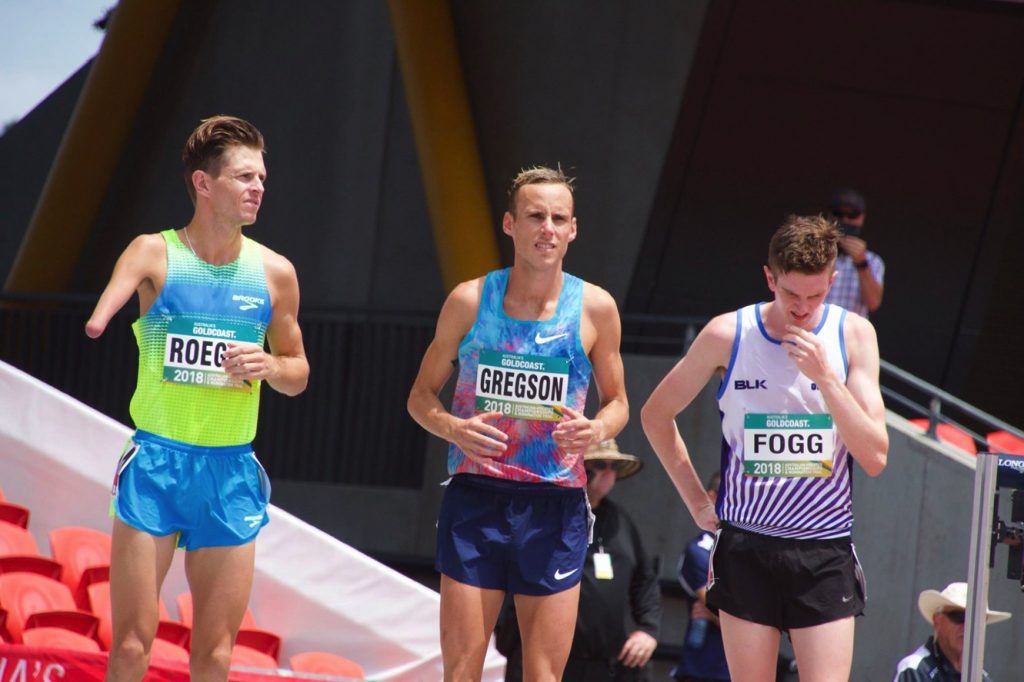
This would have all counted for nothing if 2016 and the Rio Paralympic Games had gone to plan. Entering the games in the best shape of his life, his body hardened from the miles and as lean as his physiology allowed, he was primed to strike. He had run 3:49.08 earlier in the year, after another stint at altitude and had trained with the Olympic team in Florida in the final weeks before the games. The only thing that could stand in his way was the dominant Algerian, Samir Nouioua. What reader’s must understand is that the Olympic or Paralympic Games are a pressure cooker where nerves are amplified and every thought, no matter how miniscule, is scrutinised by the beholder. I roomed with Roegs in Rio, and his calmness was uncanny, a mask for his inner tumult.
The race started slow. A game of tactics ensued, with each of the Ethiopians swapping the lead with the sole Burundian. When Roegs hit the lead with two laps to go, there was still a bunch in contention. Hovering, waiting. Nouioua sat menacingly on his shoulder. At the bell, Roegs surged, but Nouioua surged harder. From there, it unravelled. Sitting in the crowd, amongst the Australian team, it was quiet. We all knew what this one race had meant to him. We knew how much effort had gone into it. Every day for four years. He crossed the line with a bronze medal, his first Paralympic medal. “Crossing the line, I was shattered,” Roegs said. “It was a hard pill to swallow. Going in as world record holder, I feel I was the best athlete in the field and it just was not my day. I had put everything into it for the last four years and bronze was not what we came for.” For Philo, the four-year plan had only just fallen short, but he knew Roegs was not finished. “You always try look back on what you could have changed to make the result different,” he said. “I never like to dwell too much on disappointments and just try to learn what can be done differently to ensure the athlete improves.”
From here, it would have been easy to throw in the towel. To admit that you gave it your best shot and it was not enough. For Roegs, this would have been lunacy. He bounced back in style. First, he smashed the 1500m world record, running 3:46.51 in the Sydney Invitational. Then, he smashed the 5000m world record, running 14:14.91, placing 6th in the National able-bodied final. In those few months, everything he touched turned to gold. Things appeared promising leading into the 2017 World Championships in London and his shot at redemption.
Months before the championships, with exasperating familiarity, Roegs found himself struck down by something unforeseen. Days before his scheduled appearance in the lucrative Leonora Mile, he felt an uncomfortable neural pain in his right knee. There was still time. After, three MRIs, two cortisone injections, thirty-eight prolo therapy injections and a horde of local anaesthetic, time was starting to run out. The pain was still undiagnosed and when I met up with him in Europe only weeks out from the London race, he bore an obvious limp. For most, it seemed incredulous even to be thinking of racing, but Roegs persisted. “This was a tough period. Roegs had gone from smashing world records to not being able to jog pain free,” Philo said. The last straw was a race in Belgium. Braving the agonising stabbing sensation in his knee, he ran 4:08.12. It was the toughest act I have witnessed on an athletics track. It showed me what one can endure in the pursuit of their dreams.
For Roegs, this dream was over. “Pulling out of worlds was tough,” he said. “In hindsight, I had been limping around for a long time. But when you decide you can’t race, it really hits home. It was devastating, but I knew deep down we had done everything to race.” Knowing how much racing on the world stage meant to Roegs, and witnessing his sacrifices, I stood on the start line of my own race in London with fire in my belly. I decided any pain I felt was insubstantial. He inspired the effort for my bronze medal.
Over the course of the last few months, leading into last weekend’s race, Roegs has been rebuilding. It took a long time for the pain in his knee to subside. When it did, it did not take long for him to start approaching his normal best. “I have been enjoying the training again and running pain free. I had been doing some solid weeks and some pretty warm sessions that got me tough,” he said.
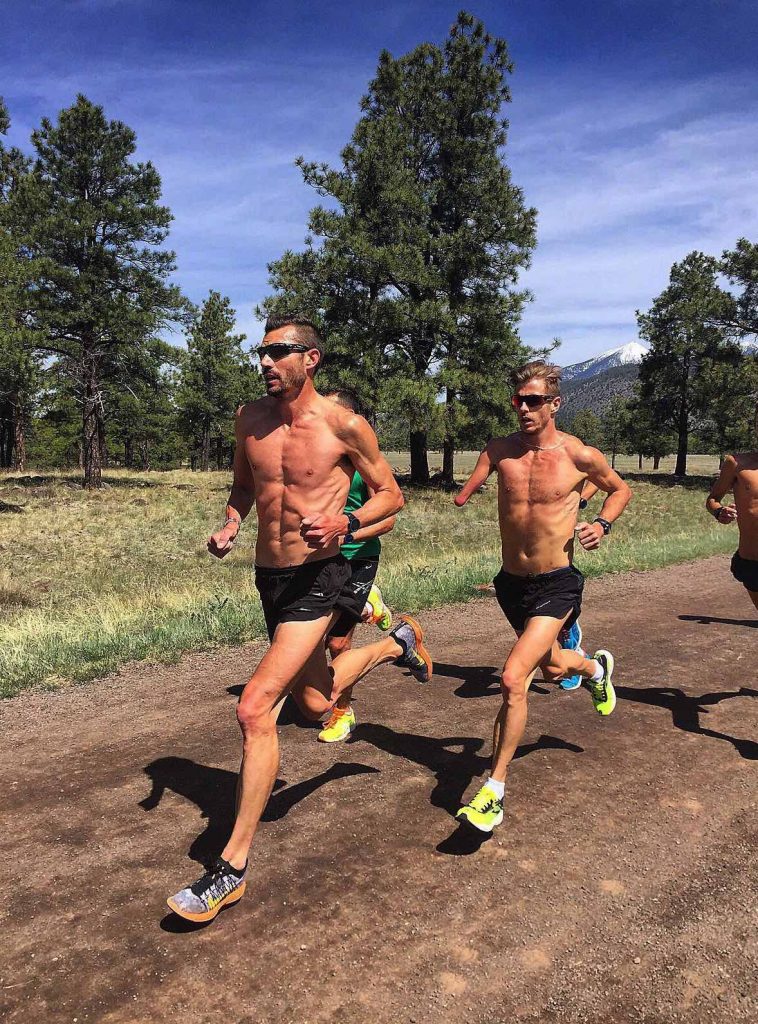
Lining up in the race against Australia’s best, his first serious race since London’s debacle, he knew what he had to do. “I had every split written out and stuck on my desk at work and in my lounge,” he said. The race was quick, but his rhythm was seamless. When it got tough, he was ready. “I had done the work. I remembered all the hard sessions, all the hard work and all those hot runs. I knew they would get me through it,” he said. Crossing the line, this time, was euphoric. His time was the bright light in a haze of uncertainty. He knew now for sure, his dream of gold was not over. “Sometimes it can be a bloody heart wrenching sport. But when hard work, planning and dedication pays off and you get the result – that is why we do it.”
Roegs has paved the way for myself as a para-distance runner. In last week’s race, I joined him as the only para-athletes to compete in distance events at a senior able-bodied national championship. Training with him in recent months has led me to believe that limitations are for the timid. Believing in yourself is paramount to success. He is someone I look up to in our sport. For now, he still searches for that elusive gold medal. His time will come. “I definitely have unfinished business. I am getting better. Not winning has left me wanting to better myself as an athlete, prepare even better and make sure I am there in Tokyo in the best shape possible. I know I am the best athlete in the world. I just need to make sure my body is right on that one day in four years and I will get the gold.”
It is not a matter of if, but when.


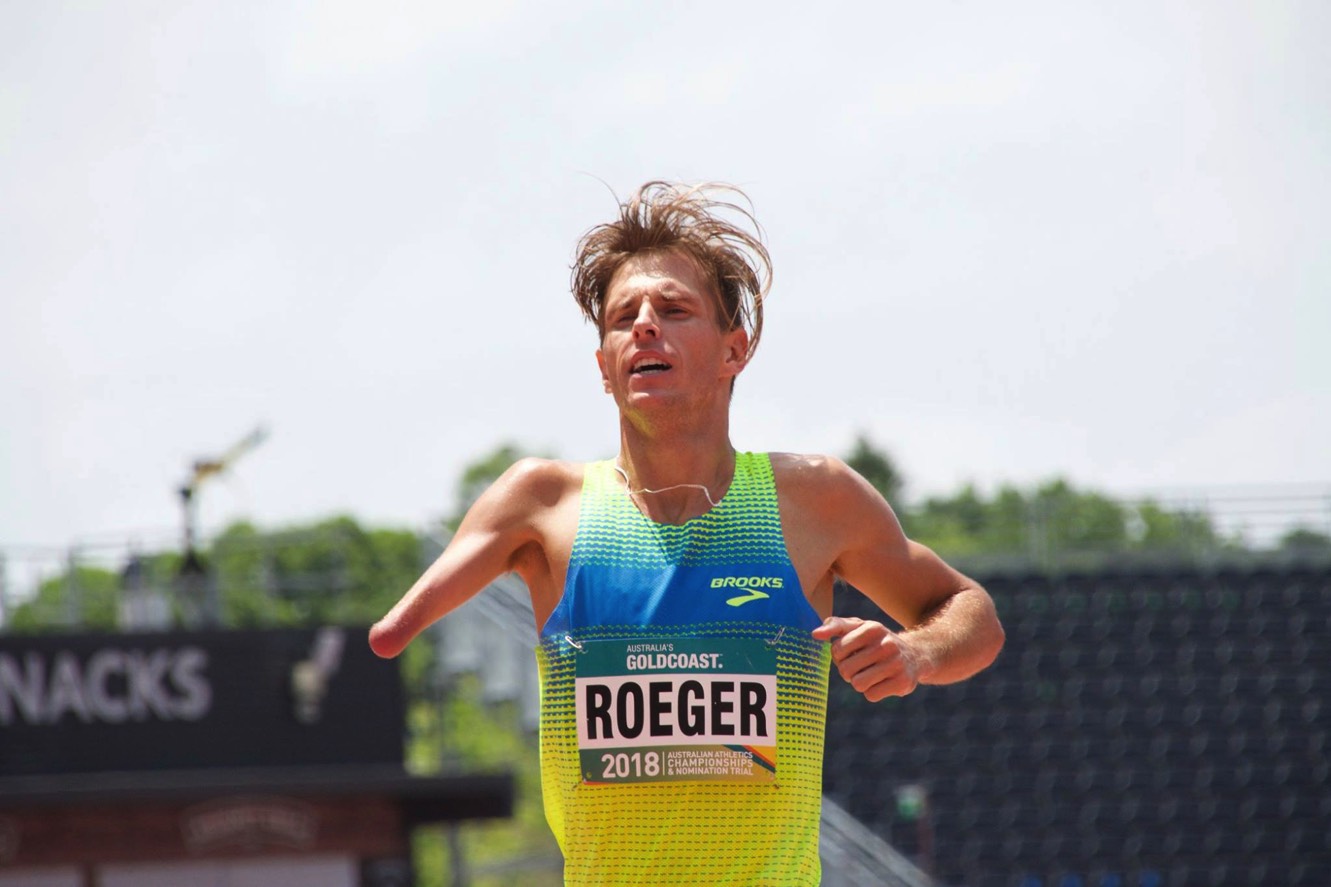













Roegs! Ur a legend! woof woof! and Jaryd clifford, you are great writer!!!